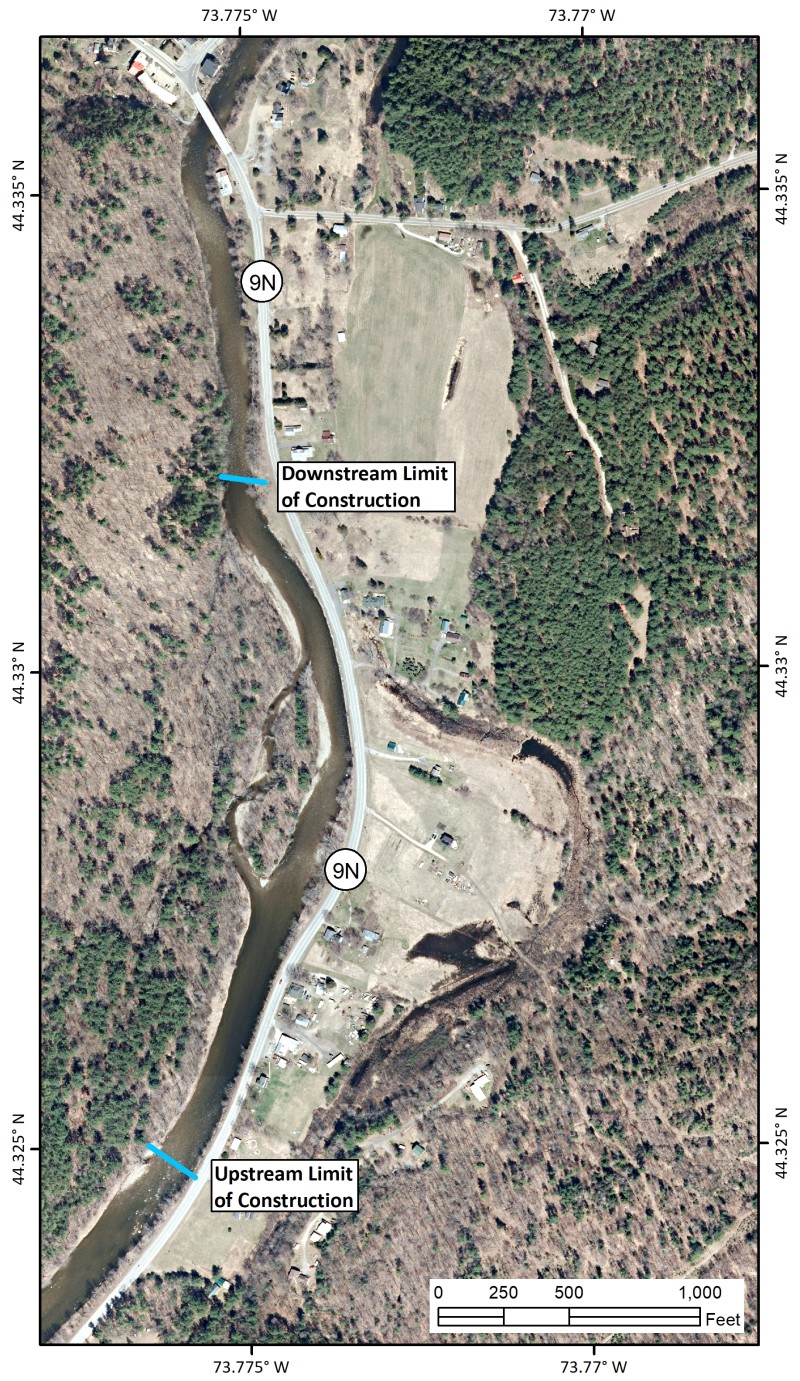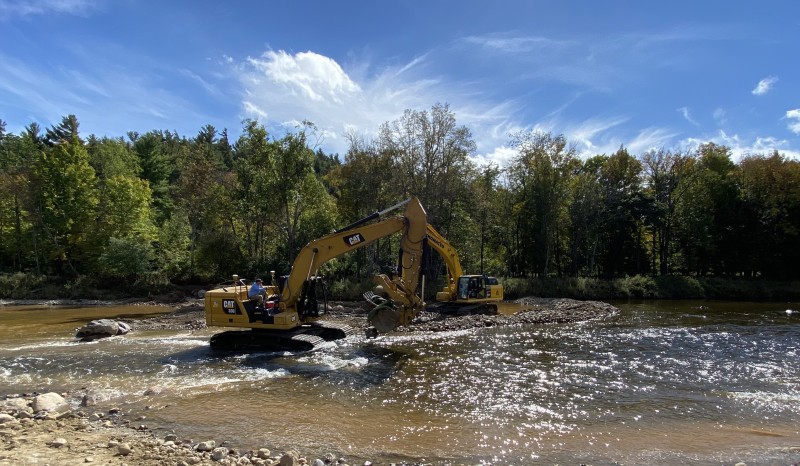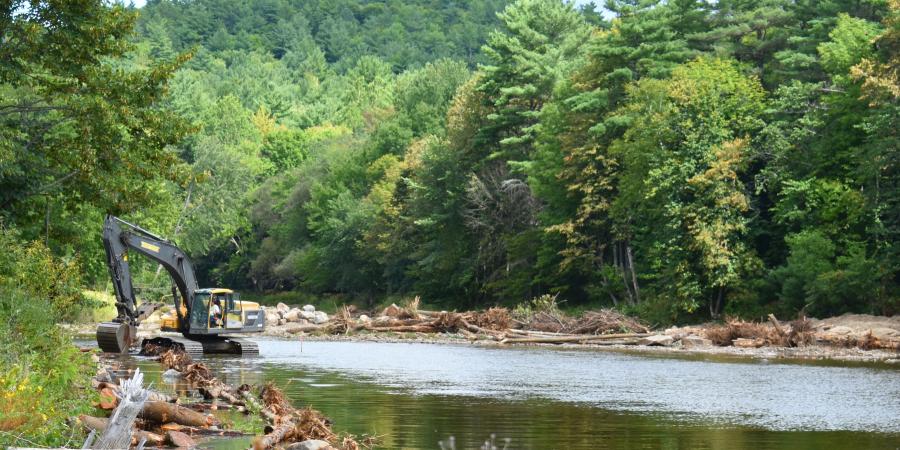This summer, the Ausable River Association (AsRA) will undertake the second phase of construction in its East Branch Restoration Program with Project Area 2 in Upper Jay. This comprehensive program, developed in 2019 with funding from the Governor's Office for Storm Recovery (now the Office of Resilient Homes and Communities), identifies 13 sites in the Town of Jay in need of restoration. Completing these river restoration projects will improve flood resilience, protect communities and infrastructure, and restore habitat for the food web that supports our native brook trout.
Project Area 2 is upstream of the NYS Route 9N bridge in Upper Jay and includes approximately 3,000 feet of river with eroding banks that have left it with an overly wide channel. Typical of many of the degraded sections of the East Branch Ausable River, the overwide channel lacks the energy to move sediment because water is spread too thinly across it. Sediment builds up in the middle of the channel in seasonal floods and leads to more bank erosion as water is directed away from the center towards eroding banks, a self-perpetuating cycle. The widening channel threatens the primary transportation artery–Route 9N–and exacerbates the formation of damaging ice jam floods.

Map showing the upstream and downstream limits of construction. River flow is from south to north in this aerial image. NYS Route 9N runs adjacent to the east bank of the river and will remain open during construction.
Support our river restoration work for clean water and healthy streams. Give with confidence today!
Our solution, developed with the US Fish and Wildlife Service (USFWS) and Ecosystem Planning and Restoration, a national leader in self-sustaining restoration design, is to mimic what works on resilient rivers with stable banks that withstand moderate flooding with little damage. Using natural materials rather than concrete and blasted stone, the contractor will build a bench along the eastern riverbank made of wood, river sediment, and coconut fiber fabric. This will shift the river channel away from the road, breaking the cycle of erosion while stimulating food webs for brook trout. Native boulders will be arranged through this section of the river to direct flows away from the banks, maintain the slope of the channel, and prevent the buildup of sediment that smothers life and destroys the structure of fish habitat. By improving the river’s ability to move sediment, this design also enhances its ability to break up ice jams. A similar design was used downstream at Project Area 3, behind the former Upper Jay schoolhouse, two years ago. It was tested by the ice jam in March 2022. The design performed as expected: ice slabs rapidly broke apart and moved into storage on the constructed benches.

Work will be in the wet with excavators placing stone and moving material in the channel. The equipment will move into and out of the river each day for the 6 to 8 week duration of the project.
With an anticipated start date of July 17, the project is expected to be completed in six to eight weeks. The work is being funded by the NYS Department of Environmental Conservation-Water Quality Improvement Program, the New England Interstate Water Pollution Control Commission (NEIWPCC) through the Lake Champlain Basin Program (LCBP), and from the USFWS.
Story by Gary Henry, Stream Restoration Manager.
This project has been funded in part by the United States Environmental Protection Agency (U.S. EPA) under assistance agreement (LC 00A00981-0) to NEIWPCC in partnership with the Lake Champlain Basin Program.
Sign-up for our e-newsletter to get weekly updates on the latest stories from the Ausable River Association.


